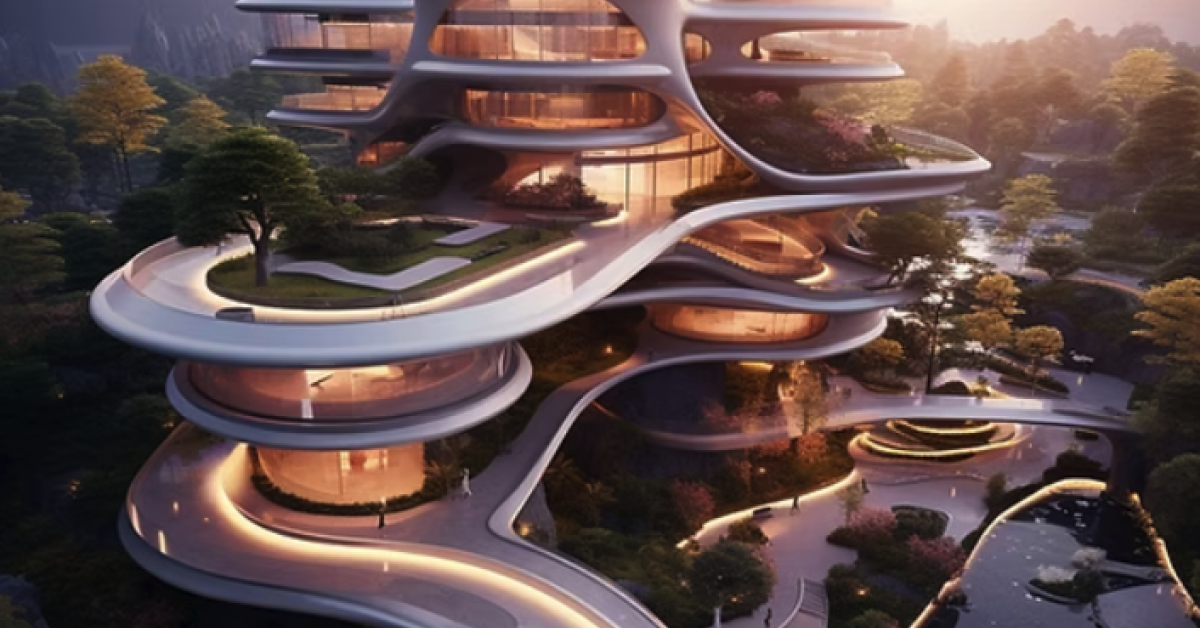How Architectural Visualization Tools Bring Designs to Life

Futuristic architectural visualization that brings design concepts to life with organic curves and natural integration-Chat GPT-Chat GPT
Imagine describing a future building to someone who can’t quite picture it. You wave your hands, sketch lines on paper, and hope they can follow along. Now, picture instead handing them a headset where they can walk through that unbuilt space—sunlight streaming through windows, furniture in place, textures so realistic they can almost feel them. That’s the magic of architectural visualization tools. These platforms transform abstract ideas into vivid experiences, allowing architects, clients, and even communities to see the unseeable.
What Are architectural visualization tools?
At their core, architectural visualization tools are digital technologies that help designers communicate ideas visually. They range from 3D rendering software like V-Ray or Lumion, to real-time engines such as Enscape and Twinmotion, all the way to immersive experiences powered by virtual reality architecture and augmented reality design. Each tool has a role: some focus on speed, others on photorealism, and others on interactivity.
Why Visualization Matters in Architecture
Architecture isn’t just about walls and roofs—it’s about how spaces make us feel. Yet blueprints and technical drawings don’t always capture that essence. Visualization tools step in to bridge the gap, letting architects translate their vision into images and experiences anyone can understand. They help answer critical questions:
- Does the layout flow naturally for daily use?
- Will the chosen materials complement each other?
- How does natural light change the mood across the day?
- Can the client truly imagine living or working in this space?
By making the invisible visible, architects reduce miscommunication, speed up decision-making, and inspire confidence in their designs.
Types of Architectural Visualization Tools
1. 3D Rendering Software
Perhaps the most well-known, photorealistic rendering tools like V-Ray, Corona Renderer, and Arnold allow architects to create lifelike images of their projects. These programs simulate light, texture, and material behavior so convincingly that rendered images are often mistaken for real photos.
2. Real-Time Rendering Engines
Unlike traditional rendering, which can take hours for a single image, real-time software like Lumion, Twinmotion, and Enscape allows architects to explore and present designs instantly. This is invaluable during client meetings where design decisions may shift on the fly.
3. Virtual Reality (VR)
VR lets users literally walk inside a digital model. With tools integrated into platforms like Revit and Rhino, architects can create immersive experiences where clients explore hallways, test furniture arrangements, and get a feel for scale and proportion before a single brick is laid.
4. Augmented Reality (AR)
While VR transports you entirely into a digital world, AR overlays digital models onto the real environment. Imagine holding up a tablet and seeing a future building rise on an empty plot in front of you. This tool is especially powerful for urban planning and public engagement.
5. BIM Visualization
BIM platforms like Autodesk Revit and ArchiCAD integrate directly with visualization tools. This means every change in the design—whether a material swap or a structural adjustment—immediately reflects in the visualization. It reduces errors and ensures accuracy throughout the workflow.
How Visualization Shapes the Design Process
Visualization tools aren’t just for presentations. They actively influence design decisions. For example, an architect might model a facade, then use real-time rendering to see how sunlight interacts with it. If glare appears too harsh, the design can be tweaked instantly. This iterative loop improves the quality of the final product.
In collaborative projects, visualization becomes a universal language. Engineers, interior designers, and clients can all engage with the model without needing to understand technical jargon. It’s like moving from sheet music to a live performance—everyone can hear the harmony rather than guessing at notes.
Benefits of Architectural Visualization Tools
- Clear communication: Clients don’t need to “speak architect” to understand the design.
- Faster approvals: Visual clarity reduces back-and-forth decision-making.
- Cost savings: Identifying issues early prevents expensive mistakes later.
- Marketing impact: Stunning visuals help firms win competitions and attract new clients.
- Immersive experiences: VR and AR let stakeholders connect emotionally with designs.
Examples in Action
Residential Projects
A couple planning their dream home may struggle to read 2D plans. But by exploring a VR model, they can decide where to place windows, test furniture layouts, or even walk from the kitchen to the garden. These moments of clarity build trust between architect and client.
Commercial Spaces
For office developers, real-time rendering tools like Enscape can demonstrate how natural light saves energy and boosts employee comfort. The client isn’t just shown a building—they’re shown how it works in daily life.
Urban Design
City planners increasingly rely on AR to showcase new infrastructure. Picture a town hall meeting where citizens can point a tablet at a park and see proposed pavilions or pathways in context. Visualization turns abstract policies into tangible futures.
The Future of Visualization in Architecture
What’s next for architectural visualization tools? Artificial intelligence is already entering the scene, offering features like auto-generating lighting setups or suggesting materials. Cloud-based platforms will soon allow entire teams to co-edit immersive environments in real time, no matter where they are.
As technology advances, the line between drawing and building continues to blur. One day, we may reach a point where a digital model isn’t just a preview—it is the construction document, marketing material, and experience all rolled into one.
Conclusion
Architectural visualization tools have become indispensable to modern practice. They don’t just decorate ideas; they shape them, refine them, and bring them to life. For architects, this means greater freedom to experiment, clearer communication with clients, and more impactful presentations. For clients, it means confidence in decisions and excitement for what’s to come.
So, the next time you think about your dream home or office, ask yourself: how would it feel to walk through it before it’s built? With today’s tools, you don’t have to wonder—you can experience it.
